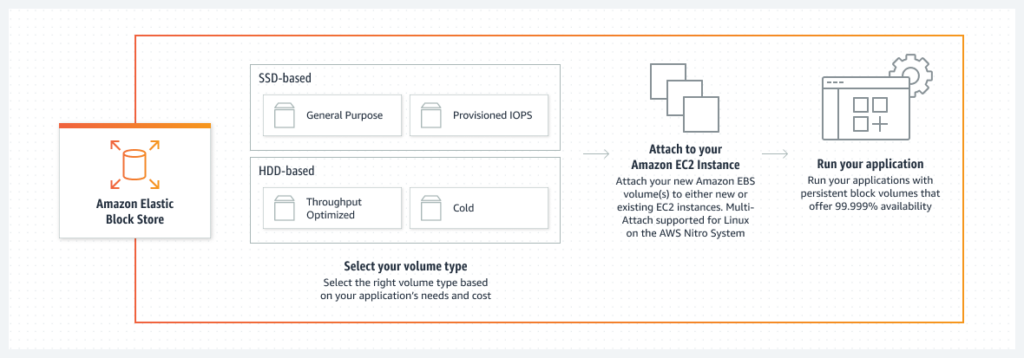
Question #1
A financial services company needs a highly durable and persistent block storage solution to store real-time transaction logs. Additionally, the company wants to store daily backup data in a cost-effective object storage service and automatically move it to long-term archival storage after 30 days.
Which of the following solutions best meets these requirements?
Show answer
✅ Correct Answer: A
✔ Amazon EBS provides persistent and reliable block storage, making it ideal for transaction logs.
✔ Amazon S3 is a cost-effective backup solution with high durability.
✔ Amazon S3 Glacier is best for long-term archival at low cost, making it the ideal choice for backups after 30 days.
❌ Why Not the Other Options?
C & D. Instance Store volumes are ephemeral and will be lost if the instance stops or fails, making them unsuitable for critical transaction logs.
B. S3 Standard-IA is designed for infrequent access but not for long-term archiving like Glacier.
Question #2
A company is using an On-Demand EC2 instance to host a legacy web application that uses an Amazon Instance Store-Backed AMI. The web application should be decommissioned as soon as possible, and you need to terminate the EC2 instance.
When the instance is terminated, what happens to the data on the root volume?
A. Data is unavailable until the instance is restarted.
B. Data is automatically saved as an EBS volume.
C. Data is automatically deleted.
D. Data is automatically saved as an EBS snapshot.
Show answer
✅ Correct Answer: C
Instance store volumes are ephemeral, meaning their data is lost permanently when the instance is stopped or terminated. Unlike EBS volumes, which persist even after termination (unless the “Delete on Termination” flag is set), instance store volumes do not retain data.
❌ Why Not the Other Options?
D. Data is not automatically saved as an EBS snapshot because instance store volumes do not support snapshots.
A. The data is not “unavailable until restarted”—it is permanently lost upon termination.
B. Instance store-backed volumes are not automatically converted into EBS volumes.
Question #3
As part of the Business Continuity Plan of your company, your IT Director instructed you to set up an automated backup of all EBS volumes for your EC2 instances as soon as possible.
What is the fastest and most cost-effective solution to automatically back up all of your EBS volumes?
A. Use an EBS-cycle policy in Amazon S3 to automatically back up the EBS volumes.
B. Use Amazon Data Lifecycle Manager (Amazon DLM) to automate the creation of EBS snapshots.
C. Set your Amazon Storage Gateway with EBS volumes as the data source and store the backups in your on-premises servers through the storage gateway.
D. For an automated solution, create a scheduled job that calls the “create-snapshot” command via the AWS CLI to take a snapshot of production EBS volumes periodically.
Show answer
✅ Correct Answer: B
Amazon Data Lifecycle Manager (DLM) is the best option because it provides an automated, scalable, and cost-effective way to manage EBS snapshots. It allows you to define policies to schedule backups without requiring manual scripting or additional infrastructure.
❌ Why Not the Other Options?
D. Manually scheduling AWS CLI commands is possible but less efficient than Amazon DLM, which is specifically designed for automating EBS snapshots.
A. There is no such thing as an “EBS-cycle policy” in Amazon S3. Amazon S3 is not designed for direct EBS volume backups.
C. Amazon Storage Gateway is used to extend on-premises storage to AWS, but it is not a native backup solution for EBS volumes.
